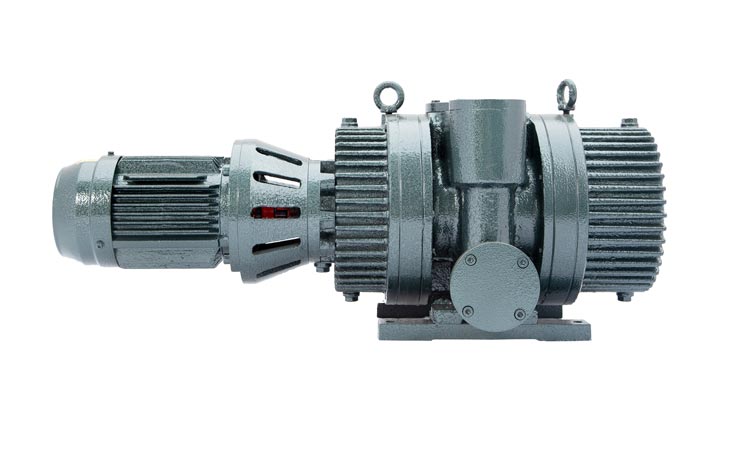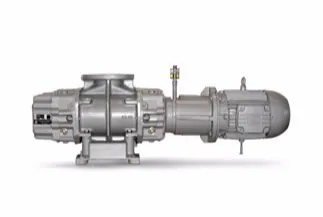Product Description
High purity vacuum Roots pump RTO. 12
LinkIn:
Facebook:
Type:
Coating Production Line
Coating:
Vacuum Coating
Substrate:
Plastic, Metal, Glass, Ceramic
Certification:
CE, ISO
Condition:
New
Usage:
Vacuum Coating Machine, Air Pump
Customization:
Available
|

How Do Roots Vacuum Pumps Affect the Efficiency of Vacuum Systems in Various Industries?
Roots vacuum pumps have a significant impact on the efficiency of vacuum systems across various industries. Here’s a detailed explanation:
1. Enhanced Vacuum Level:
– High Pumping Speed: Roots vacuum pumps are known for their high pumping speed, which refers to the rate at which they can evacuate gas from a system. By quickly removing gas molecules, these pumps help achieve and maintain a lower pressure, resulting in an enhanced vacuum level within the system. This increased vacuum level is crucial in industries such as semiconductor manufacturing, where precise control of pressure is necessary for optimal processing conditions.
– Improved Evacuation Time: With their rapid gas pumping capability, Roots vacuum pumps significantly reduce the evacuation time required to reach the desired vacuum level. This efficiency is particularly important in industries where time-sensitive processes are involved, such as vacuum drying, degassing, or impregnation, allowing for faster production cycles and increased productivity.
2. Increased Throughput:
– Continuous Operation: Roots vacuum pumps are designed for continuous operation, enabling uninterrupted gas removal from the vacuum system. Their robust construction and oil-free operation make them reliable and suitable for demanding industrial applications. The ability to maintain a consistent vacuum level without frequent stops or downtime contributes to increased system throughput and overall efficiency.
– Handling Large Volumes: Roots pumps are capable of handling large gas volumes due to their displacement principle. This makes them well-suited for industries that require the evacuation of substantial amounts of gas, such as in chemical processing, pharmaceutical manufacturing, or vacuum packaging. By efficiently evacuating large volumes of gas, Roots vacuum pumps facilitate higher production rates and improved process efficiency.
3. Improved Process Control:
– Stable Vacuum Level: Roots vacuum pumps help maintain a stable vacuum level within the system, which is essential for precise process control. By swiftly removing gas molecules, these pumps prevent pressure fluctuations and ensure a consistent environment for various manufacturing processes. This is particularly crucial in industries like thin film deposition, where maintaining a stable vacuum is crucial for achieving uniform coating thickness and quality.
– Reduced Contamination: Roots vacuum pumps operate without lubricating oil in the pumping chamber, minimizing the risk of oil contamination in the vacuum system. This is particularly advantageous in industries such as electronics, semiconductor fabrication, or research laboratories, where even trace amounts of contaminants can adversely affect product quality or experimental results. By providing clean and oil-free vacuum, Roots pumps contribute to improved process control, reduced yield loss, and enhanced product reliability.
4. Energy Efficiency:
– Lower Power Consumption: Roots vacuum pumps are designed to operate efficiently, consuming lower power compared to other types of vacuum pumps. This energy efficiency is beneficial in industries where vacuum systems are continuously operated, such as in chemical processing plants or industrial manufacturing facilities. By reducing power consumption, Roots pumps help lower operational costs and contribute to sustainable and environmentally friendly practices.
– Heat Dissipation: Roots pumps generate less heat during operation compared to certain other vacuum pump types. This is advantageous in industries where temperature control is critical, such as in semiconductor fabrication or vacuum furnaces. The reduced heat generation minimizes the need for additional cooling measures, improving overall energy efficiency and reducing operational costs.
In summary, Roots vacuum pumps significantly impact the efficiency of vacuum systems in various industries. They enhance the vacuum level, increase system throughput, improve process control, and contribute to energy savings. By providing high pumping speed, quick evacuation time, continuous operation, stable vacuum levels, reduced contamination risk, lower power consumption, and efficient heat dissipation, Roots vacuum pumps play a crucial role in optimizing the performance and productivity of vacuum systems across industries.

What Is a Roots Vacuum Pump, and How Does It Work?
A Roots vacuum pump, also known as a Roots blower or a rotary lobe pump, is a type of positive displacement vacuum pump that is widely used for various industrial applications. Here’s a detailed explanation of what a Roots vacuum pump is and how it works:
A Roots vacuum pump consists of two synchronized rotors, known as lobes or impellers, that rotate in opposite directions within a housing. The lobes have a unique helical shape with multiple lobes, which allows them to trap and move gas efficiently. The rotors are synchronized with the help of timing gears to maintain precise clearances between the lobes and the housing.
The operation of a Roots vacuum pump can be described in the following steps:
1. Inlet Stage: The process begins with the lobes rotating in opposite directions. As the lobes rotate, the volume between them and the housing gradually increases, creating a larger space at the inlet side of the pump. This expansion of the volume causes the gas to enter the pump through the inlet port. The gas is drawn in due to the pressure difference between the inlet and the pump’s internal chamber.
2. Compression Stage: As the gas enters the pump, it gets trapped in the spaces between the lobes and the housing. As the lobes continue to rotate, the trapped gas gets carried along the rotating lobes. The gas is essentially trapped in the pockets formed by the lobes and the housing. The rotating lobes then compress the gas as they move towards the outlet side of the pump.
3. Outlet Stage: As the lobes approach the outlet side of the pump, the volume between them and the housing decreases, resulting in the compression of the trapped gas. This compression raises the pressure of the gas, causing it to be expelled through the outlet port of the pump. The expelled gas is then discharged into the atmosphere or directed to a downstream process or another vacuum pump, depending on the application.
It’s important to note that a Roots vacuum pump operates as a non-contacting pump, meaning that there is no physical contact between the lobes or between the lobes and the housing. This characteristic eliminates the need for lubrication within the pump and reduces the risk of contamination or oil vapor backstreaming into the vacuum system.
Roots vacuum pumps are known for their high pumping speed and ability to handle large volumes of gas. However, they are not capable of achieving high vacuum levels on their own. To achieve higher vacuum levels, a Roots pump is often used in conjunction with other vacuum pumps, such as rotary vane pumps or diffusion pumps, in a hybrid or combination pumping system.
In summary, a Roots vacuum pump operates based on the principle of positive displacement. It utilizes synchronized rotating lobes to trap and compress gas, allowing it to be discharged at a higher pressure. The non-contacting design of the pump eliminates the need for lubrication and reduces the risk of contamination. Roots vacuum pumps are commonly employed in various industrial applications, especially when high pumping speed and large gas handling capacity are required.


editor by CX 2023-11-08
| Type: | Coating Production Line |
|---|---|
| Coating: | Vacuum Coating |
| Substrate: | Plastic, Metal, Glass, Ceramic |
| Certification: | CE, ISO |
| Condition: | New |
| Usage: | Vacuum Coating Machine, Air Pump |
| Customization: |
Available
|
|
|---|




editor by CX 2023-11-08